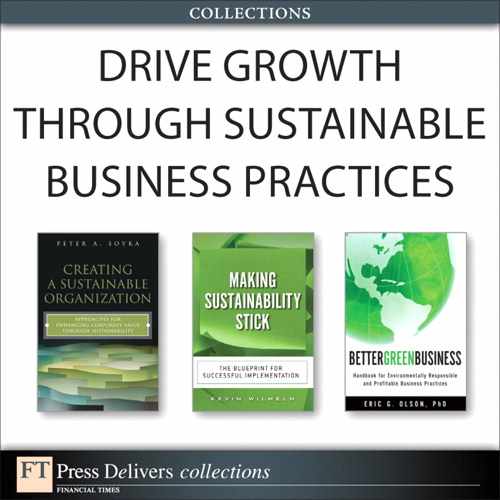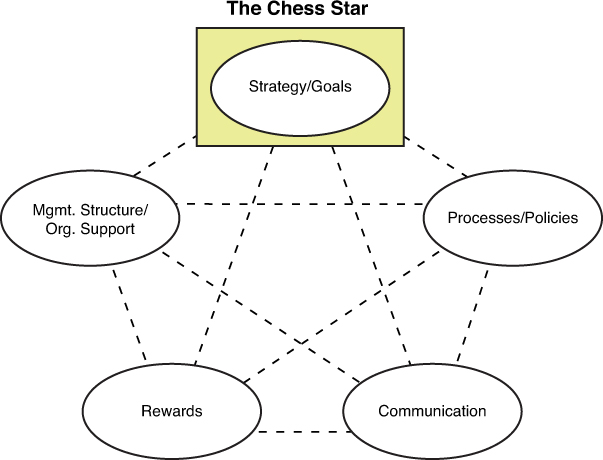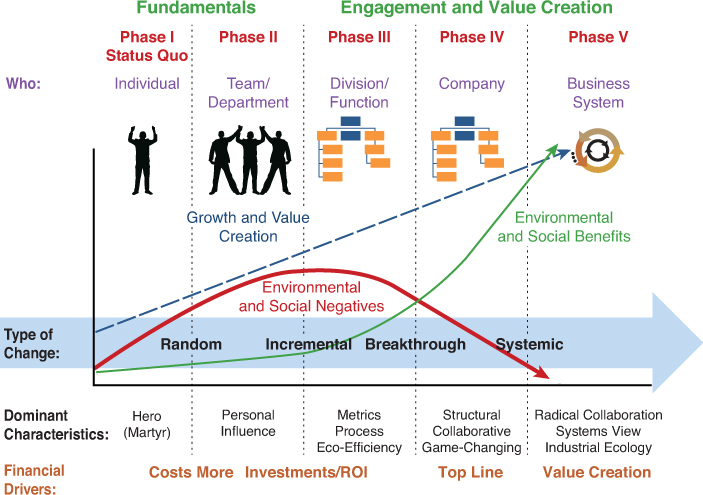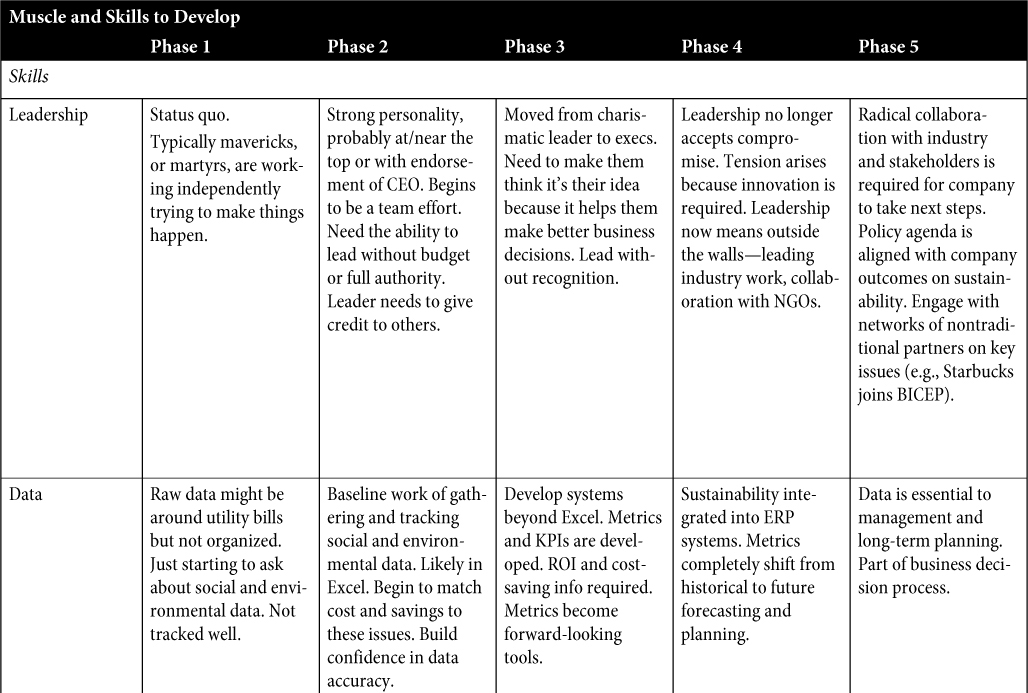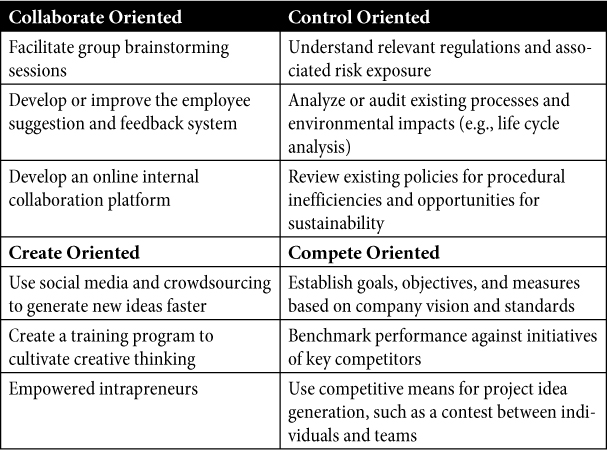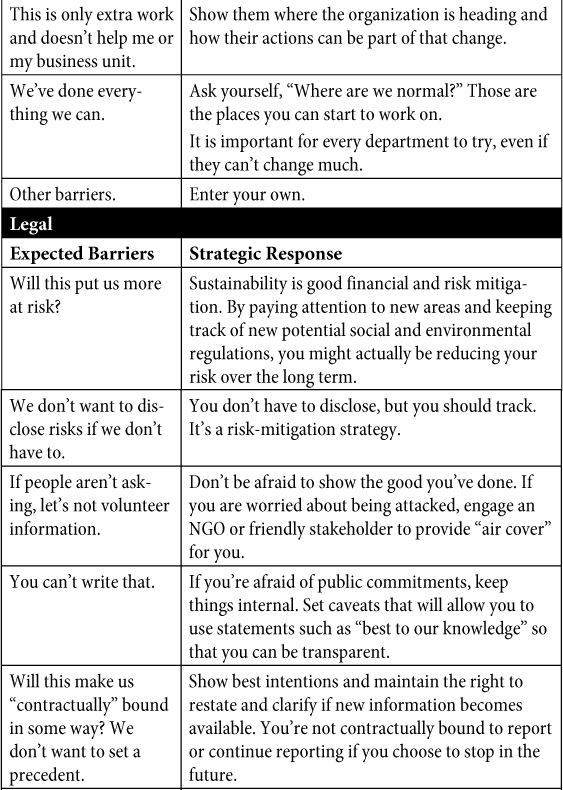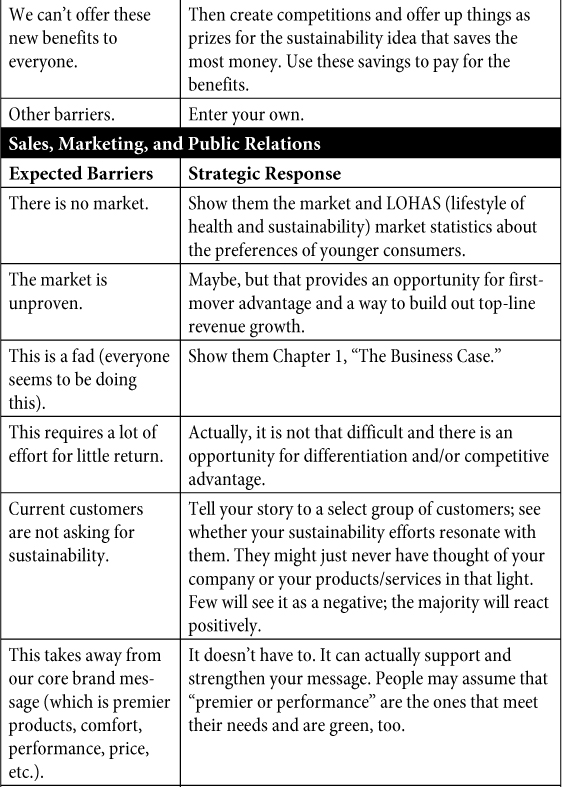7. Understanding Change Management to Guide Implementation
Change is tough. Nobody likes to be told to change how they do things, whether it’s at work or in their personal life. Don’t believe me? Cross your arms in front of you. Now cross them the other way. This feels weird, right? Now cross them back to your normal way again. Feels better and more natural, right? This is what you are up against. People are comfortable in the way they do things and even the smallest, simplest behavior changes run up against both real and perceived barriers.
It is no different with sustainability, where you might be asking employees to act or think differently. You will run into barriers that will need to be overcome, especially from employees who have done their job a certain way for a long time. You need to have a compelling vision of the future and a good rationale as to why the new, more sustainable way will be better. This is going to require a ton of heavy lifting, so you need to explain why it is worth doing.
Kevin Hagen, the former corporate social responsibility director of REI, says it best: “A sustainable business will outperform a traditional business; it’s the change required to make the shift that is most difficult.”1
Therefore, before attempting to implement sustainability across your company, it’s important that you first truly understand how your company and employees manage change within its operations, processes, and culture. Only after you have that understanding of behavior change can you break down barriers, engage the skeptics, and set your company on a path toward sustainability that will last for the long term.
Change Is Tough and Nobody Likes to Change
Think back to the last time somebody looked at the way you did your job and suggested that you do something differently—how did this make you feel? Probably not too good. Your first thought probably was, Why is this person trying to tell me what to do? This was likely followed up by the thought, I’ve been doing my job successfully for a long time. Who are they to tell me to do it differently? These are very real emotions that everyone has, which can create a natural resistance to any suggestion toward change, however logical the idea is or regardless of whether the person believes she needs to make a change.
Then there is the rational level. Think about the last time you were introduced to a new piece of technology or your firm upgraded its computer operating systems. Even though the new system was supposed to be better and provide productivity improvements, your comfort level with the existing system wouldn’t be the same and there would definitely be a learning curve that you probably didn’t feel that you had time for.
Suggesting behavior change around sustainability is just like anything else. Even though it shouldn’t be tough, it is. The common misconception that many environmentalists had over the decades was that if people just understood the facts, they would jump to acceptance and change their behavior. This was naïve and is at the core of why so many change efforts are unsuccessful.
The reality is that we all see and relate to the world through our perceptions. As John Koriath, a leadership professor at the Bainbridge Graduate Institute, states, “None of us are seeing the world as it is. We’re seeing it through our own beliefs and our emotional response to events. This is fundamental to understanding change. Nothing can change if we only see things the way we’ve always seen them. If we only see things the way we’ve always seen them, we can only go where we’ve already been. And, with sustainability, we need to take a new path.”2
Change Brings Emotion
Change has a direct and significant impact on people. “Not every employee will have the exact same response to every initiative, but by acknowledging the different ways that employees respond to change, you’ll be better positioned to understand their reactions and how to best move forward,”3 says Mary Kay Chess, the change management lead, Bainbridge Graduate Institute.
“Additionally, you have to show how the adoption of a new way is attractive and will be better for them. It can’t come across as, ‘Do this just because the boss or company says so.’”4
The diagram shown in Figure 7.1 illustrates the progression of emotions when one is trying to implement change within organizational change.5
For example, when you talk to a skeptic about climate change, sure, some of them don’t believe the science. However, the underlying psychology is that there is a fear that they’re going to have to change and that you are going to be telling them what to do and taking away things they care about.
Your role as a change agent on sustainability is to facilitate with your employees and skeptics how the new way will be better. Show them all the business benefits outlined earlier relating to cost savings, lowering risk, the ability to attract more customers, enhancing the brand, and attracting new employees, but be sure to demonstrate how the change will be better for them individually as well.
Change Is a Phased Approach
As your company embarks on sustainability or as it tries to regain momentum that it might have lost, it is helpful to realize that change is not linear. As much as a strategist would like to map it out on a flowchart, change is a process. There will be people who “get it” right away, whereas others will take more time. People move along at their own pace, and even those who get it might understand something entirely different from what is being presented by the company or leadership.
There are varying levels of idea adoption, as illustrated in Figure 7.2. There will be first movers, fast followers, the middle majority, and the naysayers. They will adopt and accept change at a different rate.
The first thing you want to do is identify the first movers. Leverage their passion and expertise to bring the fast followers along, because they’ll move into the adaptation and integration phase relatively easily and this will build momentum. Next, your efforts need to focus on the middle majority, on moving them from the resignation phase to one of possibility as soon as possible. After they are engaged, your ability to make sustainability stick will greatly improve because this is the largest group to try to shift. The naysayers and skeptics will take the most time and potentially drain your energy, so you don’t want to start or focus there. Deal with them last.
Change Is a Constant
After the change process has begun, it is important to take into consideration that this will require “multiple attempts at a process because with each change there will be ripple effects,” according to Chess.7 The reality is that when you try to implement change, even benign actions will have consequences, both good and bad, on other aspects of the organization. So realize that when you push on one point of the star shown in Figure 7.3, it will tend to put other things out of balance.
The goal is to make sure that all five factors are internally consistent. When this occurs, you will enable effective behavior and have the greatest chance for successful implementation. And remember, sustainability change is not much different from other change; it is just that the language is different for most people.
The Hagen-Wilhelm Change Matrix
There are a number of different diagrams out there to help companies understand where they are in their sustainability journey. However, none truly captured what I felt companies wrestled with as they moved from one phase to another in their adoption of sustainability. It turned out, though, that a few months into my writing of this book, both Kevin Hagen and I had started on new matrices that provided more detail, context, and the characteristics of change as companies implement sustainability. So we combined efforts and created the Hagen-Wilhelm matrix illustrated in Figure 7.4. This is designed to visually help a person or company understand what the dominant characteristics and drivers are in each stage of sustainability implementation.
Ultimately, the objective is to get the company all the way to phase five, and by having a map of the journey and what is involved in each phase, this should facilitate the process and help companies to avoid the pitfall of skipping a step or stalling out. I’ve detailed the information in Table 7.1 about each phase and described the unique characteristics to help you identify where your company is along the journey and the challenges you will face.
The goal of Figure 7.4 is to demonstrate the different types of change that occur, who predominantly leads the change, the unique characteristics, and the financial drivers of each phase as they differ as the company matures with its sustainability efforts. As you can see, at first the costs and environmental and social impacts increase as you grow, and then once sustainability becomes more embedded in everything you do, the environmental and social positives increase and lead to greater value creation and growth, and the negative impacts subside.
Main Points of the Matrix
Next I want to highlight some key points about the matrix, especially about the skills and competencies required to implement change successfully.
Understanding the Table
![]() The company moves through phases in a cluster, not in lock step—there will always be folks ahead of, and folks behind, the main curve. The practitioner has to be able to recognize where folks are at any time and keep the masses moving in the right direction.
The company moves through phases in a cluster, not in lock step—there will always be folks ahead of, and folks behind, the main curve. The practitioner has to be able to recognize where folks are at any time and keep the masses moving in the right direction.
![]() Each phase has things you must learn in order to be successful in the short term and long term. Each phase has paybacks and merit. You can deliver measurable value to the organization in each phase.
Each phase has things you must learn in order to be successful in the short term and long term. Each phase has paybacks and merit. You can deliver measurable value to the organization in each phase.
![]() You don’t check a box and move from one phase to another; it will be more of a cultural and operational shift that everyone will recognize.
You don’t check a box and move from one phase to another; it will be more of a cultural and operational shift that everyone will recognize.
![]() Although the lines are smooth, expect small dips in productivity between each phase reflecting the necessary learning, realignment of processes, inevitable confusion, and just natural variation of people repositioning themselves for change.
Although the lines are smooth, expect small dips in productivity between each phase reflecting the necessary learning, realignment of processes, inevitable confusion, and just natural variation of people repositioning themselves for change.
![]() When you get to that trade-off conversation in Phase 3 and tensions mount because people are starting to become backed into a corner, that’s when innovation and rule breaking occurs because they might need permission to knock down a wall.
When you get to that trade-off conversation in Phase 3 and tensions mount because people are starting to become backed into a corner, that’s when innovation and rule breaking occurs because they might need permission to knock down a wall.
![]() Start working with NGOs and industry partnerships early because you’ll need these relationships later, especially in Phases 4 and 5.
Start working with NGOs and industry partnerships early because you’ll need these relationships later, especially in Phases 4 and 5.
![]() Be warned that the dominant behaviors of the leader that are needed for success in one phase can be derailers in the next. As the leader, be self-aware and recognize it if you’re the barrier to next-phase success.
Be warned that the dominant behaviors of the leader that are needed for success in one phase can be derailers in the next. As the leader, be self-aware and recognize it if you’re the barrier to next-phase success.
Skills and Competencies
![]() There is a set of individual skills and competencies that go along with this process. A company builds them over time, the same way an athlete builds muscle. You might not need every skill in every phase, but you’ll want to build that muscle for later phases, where you’ll need it. If you don’t build it earlier, it will stop you or slow you down when you need it.
There is a set of individual skills and competencies that go along with this process. A company builds them over time, the same way an athlete builds muscle. You might not need every skill in every phase, but you’ll want to build that muscle for later phases, where you’ll need it. If you don’t build it earlier, it will stop you or slow you down when you need it.
![]() Moreover, the skills, people, and competencies that were necessary for one phase might be different from what you’ll need at another phase. This will be difficult especially if you were successful in the preceding phase. Getting people to change or think differently will be tougher in the next phase. Ask, “What needs to be changed to get to the next phase?”
Moreover, the skills, people, and competencies that were necessary for one phase might be different from what you’ll need at another phase. This will be difficult especially if you were successful in the preceding phase. Getting people to change or think differently will be tougher in the next phase. Ask, “What needs to be changed to get to the next phase?”
People
![]() As Kevin Hagen says, “The job of the leader is to know how much to invest in skills and competencies in each phase. You can’t spend all the resources in Phase 1!”8
As Kevin Hagen says, “The job of the leader is to know how much to invest in skills and competencies in each phase. You can’t spend all the resources in Phase 1!”8
![]() “Executive sponsors need to adapt, learn, and move with the organization as well. They have to move to deemphasize what worked in that first ‘hero phase’ and move to a new stage.”9
“Executive sponsors need to adapt, learn, and move with the organization as well. They have to move to deemphasize what worked in that first ‘hero phase’ and move to a new stage.”9
![]() Everyone likes to be recognized, so remember a famous quote that is often attributed to Harry Truman: “It’s amazing how much you can get done when you let other people have the credit.”
Everyone likes to be recognized, so remember a famous quote that is often attributed to Harry Truman: “It’s amazing how much you can get done when you let other people have the credit.”
![]() From that point, realize that it might take time for a CEO or manager to understand what is needed in a phase, so plant a seed in their head well ahead of time, and then ask questions about it. You’ll be more successful if they think it is their idea when the time comes.
From that point, realize that it might take time for a CEO or manager to understand what is needed in a phase, so plant a seed in their head well ahead of time, and then ask questions about it. You’ll be more successful if they think it is their idea when the time comes.
![]() The characteristics of the people who helped you get started in the hero stage will be essential early on, but as you move into later phases, you’ll want to rely less on individual heroism and more on process and systems. For example, creative employees might do great in one phase but struggle in the next phase when operationalizing the idea requires a different skill set.
The characteristics of the people who helped you get started in the hero stage will be essential early on, but as you move into later phases, you’ll want to rely less on individual heroism and more on process and systems. For example, creative employees might do great in one phase but struggle in the next phase when operationalizing the idea requires a different skill set.
Arguments Worth Having
![]() Although there is always a cost to getting started and beginning implementation, it’s also important to ask and calculate the cost of not moving to the next phase. Be sure to ask, “What cost savings and efficiencies are we leaving on the table? What opportunities are we not capitalizing on?” Too often the conventional wisdom focuses on what things will cost to “do”; be prepared to show the cost of not moving!
Although there is always a cost to getting started and beginning implementation, it’s also important to ask and calculate the cost of not moving to the next phase. Be sure to ask, “What cost savings and efficiencies are we leaving on the table? What opportunities are we not capitalizing on?” Too often the conventional wisdom focuses on what things will cost to “do”; be prepared to show the cost of not moving!
Understand Your Company
Any change initiative is going to be messy. How do you best prepare for this? You want to first assess your company culture and identify how your company best handles change.
When assessing your company culture, you will want to look broadly across your company at your services, products, customers, finances, processes, history, and internal policies. This is because you’ll realize that your culture is embedded in each of these. As intercultural solutions specialist Cecilia Utne, of Shepell.fgi, states, “Culture is in how we communicate, the words we use, and the way we think.”10
Don’t minimize the role that culture can play when trying to implement change. It can play a powerful role when the behavior you want to change is in alignment with your existing corporate values and goals and isn’t something that is radically different. Operate from within a cultural language and framework that people in your company can relate to, or it simply won’t work.11 Therefore, be sure to assess and know your culture before launching behavior change.
Beware of the “Initial Nice”
Claudia Capitini, the former sustainability maven of Eco-Products, said about working with one of her former companies that “when you first get started, a lot of people are initially nice, but the authentic culture does not become apparent to you for months after those initial meetings.”12 People might voice support or nod in agreement early on, which might give the impression of perfect alignment, but the reality might be quite different after they are asked to allocate resources, budget, and staff.
How Your Company Manages Change
Company cultures are as varied as the employees themselves, and each company handles and manages change differently. Here are a couple of basic questions to ask to determine how your company best manages change:
![]() How do policies and procedures normally take root? Is it a top-down approach or more of a grass-roots movement?
How do policies and procedures normally take root? Is it a top-down approach or more of a grass-roots movement?
![]() Do you have a command-and-control structure in which people wait for approval before trying something new, or do you have a creative structure in which people innovate and tend to ask for forgiveness rather than permission?
Do you have a command-and-control structure in which people wait for approval before trying something new, or do you have a creative structure in which people innovate and tend to ask for forgiveness rather than permission?
![]() How competitive are you as an organization? Are people motivated to win? For example, will people or departments be more likely to embrace change if they can “beat” someone or a group within the organization?
How competitive are you as an organization? Are people motivated to win? For example, will people or departments be more likely to embrace change if they can “beat” someone or a group within the organization?
Table 7.2 displays the four methods for managing change according to the National Environmental Education Foundation.13
Understanding how your company handles change sheds light on how change can be implemented. In some cases the structure might vary on the timing or type of initiative, so it might be a combination. Therefore, it’s prudent to first figure out the best method for implementing that change and apply the appropriate structure to give it the best chance for success.
Change Takes Time
Sustainability is a complex issue. It requires systemic, long-term thinking and hundreds of small actions, not just one big one. Change is a triathlon. You need time to train and build muscle. You’re not going to wake up and do it all tomorrow. For even small changes to take place, it is reasonable to expect that it takes two to three months to understand, to tweak, and then to incorporate new approaches. As Mary Kay Chess says, “For large, complex organizations with multiple changes underway, it might take almost a year for ongoing, conscious or unconscious modifications to processes and communication.”14
Get Comfortable with Uncertainty
There are going to be instances when there is no guideline, playbook, or path to follow. In fast-moving markets you might be innovating or making things up on the fly. Don’t let this scare you. Remember that ambiguity and contradiction are inherent in what you’re doing, because it’s complex; don’t cower from that, but embrace it.
Stay positive and realize that with sustainability, persistence is key. Change takes time and you will lose battles along the way. Keep perspective and remember what change-management practitioner Terra Anderson says: “There will be scary times, but the difference between a loser and a winner on these issues is that the winner gets up one more time.”15
Understanding Your People
As mentioned, people will be at different points on the sustainability adoption curve. That makes it essential that you make an extra effort to understand the people within your organization.
Understand not only their opinions about sustainability, but their different personality types, speaking styles, and learning styles. You cannot apply a one-size-fits-all approach to your sustainability implementation plans.
You will need to tailor your message and education of your employees using various methods and techniques based on how they see the world and what they care about. As Steven Covey is fond of saying, “First understand what the other person cares about, and then try and talk to them about that.”16 Don’t start trying to talk to someone about sustainability and change without knowing what the person on the other end cares about.
This will be more difficult within larger organizations, but this work is essential. Dawn Danby, the sustainable design program manager of Autodesk, states from her experience that “some people are effective at being collaborative. Others need to be told what to do and work better under a more authoritative manager. Some are driven and self-directed. Others need education and want a safer route with a plan and formula.”17
The style you use will depend on the culture of the company, and it’s important to realize that your change efforts will need to reach both extroverts and introverts, as well as visual and auditory learners. Each type of person has different ways in which he or she wants to learn and embrace new initiatives.
For example, I’ve found that most CEOs with whom I interact are extroverts. Because of their time constraints, they learn best from short, succinct, summarized reports with easy-to-understand visuals. Because this works for them, they sometimes think this is the best and only way to reach all of their employees. Nothing could be further from the truth.
Having a fair understanding of these stylistic differences will open the door to assorted methods to reach your employees, expand your reach, and ensure that you will be appealing to all cross sections of employees and not to only one group. This requires some nuance but it is doable.
The Culture Outside of the Office
Understanding your people means also considering the culture outside of work—what the norms are in their lives, in their community, and in the communication styles of their culture. This is especially important with multistate and multinational companies.
Different offices from around the globe will be home to employees with different cultural norms. For example, North American employees tend to be more individualistic, talkative, pragmatic, and goal oriented, and believe that their destiny is in their own hands, whereas in Japan or the Far East, employees are more group orientated and listeners. Here, a 20-second delay to listen and think through an idea is commonplace.
You need to recognize these cultural norms, because if you are suggesting sustainability ideas in a boardroom in the Far East and “hear no objections,” you’ll think you’ve nailed it, when the reality is that maybe people are just being polite. Similarly, if you aren’t used to direct communication and you present an idea to someone from Germany or the Netherlands (where they tend to speak more directly), when they start intensively asking you questions, you might take this the wrong way if you aren’t prepared for that type of communication style. They might simply be asking questions and are in total support.
Culture norms are the things you are doing and the way you are doing them, without knowing you are doing anything at all. For example, Table 7.3 shows the differences between the aforementioned individualistic and group-oriented cultures that you’ll need to be aware of when talking sustainability with your employees.
When you’re working toward change within an organization, it is 50% about learning about other people and their cultural norms and 50% about inflection/learning of your own. So before you try to talk to your employees about sustainability and why they should care about it, understand both your culture and theirs and ask yourself, “What emotions and expectations am I holding? Do I have an anticipated outcome or am I open to any occurrence?”
Connecting Personally First
One technique I use when talking with someone about sustainability for the first time is that I don’t try to get into the technical aspects of the work before I connect with them on a human scale. So rather than asking people about what they think about sustainability, I start by asking them where they are from because we all are from somewhere. I look for some type of shared connection or shared cultural experience (whether it be a travel experience, knowing someone from there, rooting for the same sports team, etc.). This then helps smooth the path into talking about sustainability, because when we get to that point of talking about change, you will have made a personal connection and won’t be seen so much as “that green/sustainability” person.
Breaking Down Silos and Coordinating across Departments
Organizational structures have long been set up with silos to create specialization and focus. Although this worked well in the 20th century with managers concentrating on their own stovepipe and rarely looking up, down, or across the company, this will no longer work in today’s fast-paced, information- and consumer-driven economy.
Companies need to get away from the silo mentality because coordination across departments is where the greatest opportunities lie to create efficiency, drive change, incorporate sustainability, and harness the power and ideas of all of your employees.
Most large companies still work with siloed departments, in that each one has little to no idea what another is doing. Someone might be driving the sustainability program in one department, but other groups like marketing, public relations, philanthropy, sales, business development, R & D, operations, logistics, and community relations might be implementing their own efforts, usually without communicating with each other, and rarely aligned.
This typically happens because people are evaluated and incentivized by what they do for their boss and within their department, not for how they help the company’s overall efficiency, productivity, or success. Therefore, five things have to occur to help break down silos and increase collaboration around sustainability:
1. Ensure that information flows across, up and down, and within departments.
2. Priorities need to be aligned—the company versus the department.
3. Decision making should be coordinated across silos.
4. Create a team that looks across the company. They should be skilled leaders with credibility to identify opportunities and drive change, including key people who could block things later.
5. Find examples in the past—whether they be a product, process, or service—where cooperation between departments led to success, and build off those instances.
The goal in breaking down silos is not to destroy a department’s autonomy, but rather to eliminate the issues that caused conflicting priorities, lack of information flow, and duplication of efforts and resources.
How many times have you come up with an idea at your company, only to find out that another branch or department is working on the same thing? At one point when Kodak was trying to get into the digital camera market, it had seven separate initiatives taking place across the company.
Let me give you two examples that illustrate two different siloed approaches: first, where silos were plain as day and led to inefficiency and a lesser work product, and second, where sustainability was used as a means of breaking down the barriers between various silos and a new process was developed that led to a new product and a new revenue stream.
The first scenario was with a utility company. We had been working with their green team on a variety of issues over the course of a year, and it got to the point where the team decided that it wanted to create a CSR report. Then after weeks of working with the team and talking through the best stories to share, we drafted the beginnings of a C-Level GRI report. But about six weeks in, a communications person joined the conversation and blurted out in frustration: “I don’t know why we keep talking about this; we have an environmental report at the printer right now. My department has been working on this for months!”
We were all dumbstruck. Nobody on this fairly high-level green team knew that this was already in the works. In addition, after reading the report, we all found it full of fluff and it seemed that it was likely to do more harm than good. The siloed approach of this company’s communication department wasted energy and resources of all those involved. It resulted in the group feeling burned by the process, and it made them less inclined to help the next time around.
What you want to do is use sustainability to break down silos. Take, for example, the second scenario with Cascade Designs, the maker of the popular Therm-a-Rest mattress. It was looking for ways to reduce its waste costs associated with the disposal of excess foam from its mattresses. In a traditional siloed organization maybe the manufacturing, facilities, or designers would have tried to come up with a solution on their own that could reduce waste disposal costs. However, what Cascade did was bring together a cross-functional team to look at this issue, and they found that the excess foam could be used as the raw material for new camping pillows, something that its customers had been requesting. So they took what was waste and turned it into the raw materials for a new product, thus reducing waste costs and increasing top-line revenues at the same time. It took what was an expense and turned it into productive revenue on the income statement, all while meeting customer expectations and lowering their environmental impact.
This is an example where sustainability can turn what was once thought of as business as usual onto its head, inviting innovation, collaboration, and excitement into any organization as long as the people are willing to adopt a new way of thinking. This can make any type of change initiative feel more empowering and less daunting.
Don’t Rest on Your Laurels
There is a tendency at some point within any initiative to feel as though you’ve made it and you can begin to relax. For any of us who have ever tried to diet, we’ve gone through this same cycle. After you lose the weight and feel good, at some point you want to reward yourself ever so slightly. It’s a snack here or there, and soon you stop getting on the scale. Then because the changes are so slight, you don’t notice them until it gets bad enough that you feel as though you need a drastic change again. In the same way, companies get started on sustainability, make progress, feel good, and then lose momentum and have to reenergize their efforts over and over. Because the feedback and measurement for social and environmental issues are usually not immediate, the steps backward are less visible. Be careful to avoid this step.
When you are doing great, have a budget, and have engaged employees, don’t take your foot off the gas; step on it with all your might!
Engaging the Skeptics
Throughout life, we have all run into skeptics or naysayers about something we’re trying to do, whether it is at work or in our personal life. The natural tendency is to get annoyed and try to disassociate yourself from skeptics. Don’t do that in this case. When trying to implement sustainability, engage the skeptics early on. They are the ones who will identify the land mines on your path. And it’s better to find these out and figure out how you are going to address them before you get 80% of the way down the path.
Skeptics can be one of the greatest resources you can have with any implementation project or change initiative because they are the ones who have concerns, see potential hiccups, notice blind spots, and think they know what’s wrong with your idea. They might know the answers to the unspoken questions. And remember, not all naysayers or skeptics are ill-intentioned. As Terra Anderson is fond of saying, “The cynic is the one whose heart has already been broken.”18
Go to your skeptics and ask these questions:
![]() What’s going to go wrong with this plan?
What’s going to go wrong with this plan?
![]() Can you think of something that would work better that will address your concerns? If not, who should be asked?
Can you think of something that would work better that will address your concerns? If not, who should be asked?
![]() What has to happen for this to work? What would you do?
What has to happen for this to work? What would you do?
Then, repeat this process at every major stage of work flow.
As with all things, the key here is timing. You don’t want to engage skeptics fully and try to address all their concerns before you’ve even started, or else, in shipping terms, you might never leave port. The best time to engage them is when you are 20% in. This is where course corrections can be made easily before too much time and resources have been spent, and it allows for heightened engagement because they can help shape the effort. If you wait until you are 50% or 75% of the way there, it will require much more time and work to undo things, cost more, and be demoralizing to the people involved.
Find Common Ground
When you run into resistance, ask questions differently to find out what is behind their resistance, and try to seek common ground.
When we started working with one of our retailer clients, the sustainability director had cooperation from most of the people she worked with but not all. There were a few people who viewed sustainability as a distraction and therefore weren’t fully supportive. In a heart-to-heart discussion with these individuals, she realized that the sticking point wasn’t that they didn’t believe in the idea of enhanced sustainability across the company, but just that they were already stretched thin and were worried about how the costs were going to show up on their own department’s profit and loss (P & L) statements.
To alleviate this problem, she pulled money from her budget and used some of it to create an internal fund to support internal projects. Then she reached back out to one individual who had the greatest reservations about “this whole sustainability thing” and used that money to fund an energy-efficiency project for this individual’s line of business. It was a win-win for both of them and the skeptic was happy because it did not negatively impact his department’s P & L.
The result was that now they are working together and looking for other high-value projects where they can partner again in the future.
Group Discussion versus One-on-Ones
There are times when you are trying to get things worked out and you want all the decision makers and affected parties in the room so that there can be agreement. Realize that it is actually very rare when you need to have everyone in the room. Most of the time it’s best to have little side meetings offline, where you can work out the uncomfortable issues ahead of time and quietly rather than in front of everyone. If someone is showing true resistance, often it isn’t what they are saying in the big room that is the reason. There usually is something more fundamental that is bothering them—they might be afraid of being “on the hook” if things don’t work out right, and they don’t want to be the fall person. In these instances, rather than trying to convince them in front of everyone, try to meet up with them one-on-one and hash out the issues privately.
Sometimes an Outsider Works Best
If you cannot make any headway, sometimes a solution is to bring in an outside consultant or facilitator. They can do the research independently and provide a report to management or the skeptic. This can have a way of providing an opinion outside of the company that they haven’t heard from before. I’ve seen this be successful a number of times, because it changes the dynamic between you and the skeptic. It is no longer about you or your opinion; instead, the discussion can be about the report, what the expert said, and the information instead of the personalities involved.
Lessons Learned
The following are key takeaways from the “Understanding Change Management to Guide Implementation” chapter:
![]() Change is tough. Do not expect it to be easy or quick. Accept that it takes time. Change is scary for most people. People will go through various emotions during the change, from anger to resignation to realization of possibility. If you ask people to change, you have to show them how the new/sustainable way will be better for the company.
Change is tough. Do not expect it to be easy or quick. Accept that it takes time. Change is scary for most people. People will go through various emotions during the change, from anger to resignation to realization of possibility. If you ask people to change, you have to show them how the new/sustainable way will be better for the company.
![]() Change is not linear. People, departments, and offices will not move in lockstep.
Change is not linear. People, departments, and offices will not move in lockstep.
![]() Deliver. After you tell people you are going to change, you have to do so. Nothing is more demotivating than having an employee with a passion who offers something but nothing is done!
Deliver. After you tell people you are going to change, you have to do so. Nothing is more demotivating than having an employee with a passion who offers something but nothing is done!
![]() Before starting on incorporating sustainability, understand your people and how your company deals with change.
Before starting on incorporating sustainability, understand your people and how your company deals with change.
![]() Know where you are on the Hagen-Wilhelm matrix and realize that the skills and competencies required in one phase might be inadequate or you might need new ones in order to move through the next phase.
Know where you are on the Hagen-Wilhelm matrix and realize that the skills and competencies required in one phase might be inadequate or you might need new ones in order to move through the next phase.
![]() When you experience success, push the advantage while you have the momentum.
When you experience success, push the advantage while you have the momentum.
![]() There will always be skeptics. Rather than dismissing them, engage them. Find out what their concerns are, and then address them.
There will always be skeptics. Rather than dismissing them, engage them. Find out what their concerns are, and then address them.
![]() Look at past change initiatives that have been successful, such as introducing sexual harassment policies, work from home, or diversity. Identify what the keys to success were and replicate them.
Look at past change initiatives that have been successful, such as introducing sexual harassment policies, work from home, or diversity. Identify what the keys to success were and replicate them.
